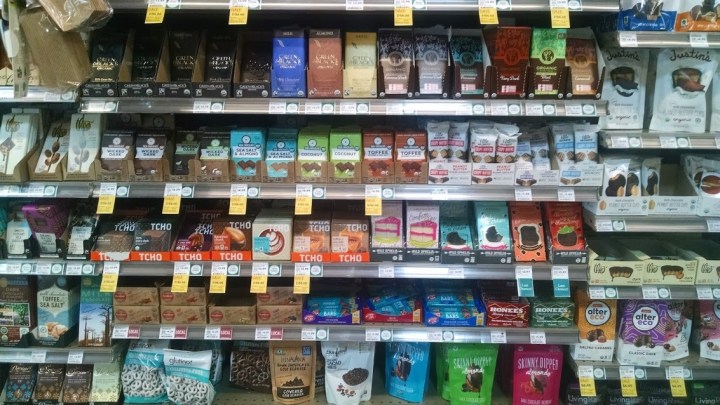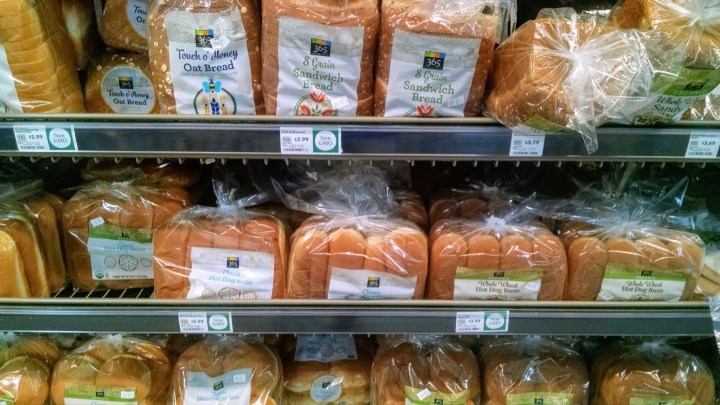Apparently processed foods are no longer as bad for us as we have been told. It is just the ultra-processed foods that we need to avoid. But just what is the difference between a processed food and an ultra-processed one? The answer may surprise consumers as there are many more foods found in the ultra-processed class of foods than most people realize. Chances are that most of us have consumed several ultra-processed products in a recent 24-hour period. I know that I have including bread, Shredded Wheat containing no added sugar, Activia yogurt, hot dog wiener, crumbled Ritz crackers and shreds of cheddar cheese on top of my unprocessed fresh red snapper, and Greek salad dressing on my relatively unprocessed Greek salad.
The case against ultra-processed foods includes contributing to obesity in wealthy countries with malnutrition combined with obesity in less wealthy nations. Ultra-processed foods have been linked to increased rates of cancer, heart disease, and shorter life spans. All of this negative press is frightening, but is it true? Could we actually prevent death by avoiding all ultra-processed products as the headline of one story suggests? Not so fast! Let’s see how certain foods have been classified as ultra-processed and other products have escaped the designation.
Ultra-processed foods have been defined as “industrial formulations typically with five or more and usually many ingredients.” It is essentially a codification of Michael Pollan’s Food Rule #6 in Food Rules—“Avoid foods that contain more than five ingredients.” This rule only applies to commercial products with ingredient statements. Imagine how boring it would be to eliminate all home-cooked dishes with more than five ingredients! The primary rationale for eliminating multi-ingredient products from one’s diet is that they contain food additives like “sugar, oils, fats, salt, anti-oxidants, stabilisers, and preservatives.” Actually, it turns out that adding sugars, oils, fats and salt to home cooked dishes is fine. It is just those packaged products where the rule applies. Of particular concern are “substances not commonly used in culinary preparations, and additives whose purpose is to imitate sensory quality of group 1 foods”. A group 1 food is “unprocessed or minimally processed” BTW.
The beauty of this classification scheme is that it is easy to distinguish between an ultra-processed food from one that is either unprocessed or just processed. All one has to do is to be able to count to six. BUT, is this simple task really all that is needed to separate out healthy foods from unhealthy ones? I don’t think so. It seems to be more designed to separate home-made foods from commercially manufactured ones or as Pollan states in Rule #19 “If it came from a plant, eat it; if it was made in a plant, don’t.” I think that Michael Pollan is a brilliant writer, but I am not ready to deed over to him my spiritual guide to what I should or should not consume. As the food journalist Tamar Haspel has suggested, this campaign against food additives, which are harmless at the levels they are consumed, is really directed at manufactured foods.
The problem with this classification scheme is that it is not really about processing, it is about the mixing of ingredients or what food scientists refer to as formulated foods. Ultra-processing to me would be extremely high processing temperatures, extremely long processing times, extremely high processing pressures, or extensive purification. The little secret about ultra-processing as defined by the NOVA system is that if is NOT about processing at all. It is about industrialization of food and the use of ingredients deemed unacceptable by the group of nutritionists and public health advocates. When I was teaching a course in “Food Processing” I would not consider a snack cake to be a more highly processed item than a canned vegetable or a loaf of bread to be more highly processed than a bag of white sugar. The snack cake and the loaf of bread are classified as ultra-processed, the canned vegetable as processed and the sugar a culinary ingredient.
Ultra-processed foods are a combination of four distinct groups of food products—junk, convenience, functional and distilled spirits. What makes these so dangerous? These items were produced by a manufacturer who mixed together more than five ingredients and then processed them through a series of steps analogous to what happens in a home or restaurant kitchen. The other thing that supposedly makes these products so dangerous is that they have chemical ingredients added to them, but then again, all foods are composed of chemicals. The more natural the food, the more chemically complex it is as described in The Dorito Effect. The most dangerous chemicals in food and beverages at the levels we consume them are probably caffeine and alcohol, but we are familiar with them so we discount their dangers. Let’s look at these four subcategories of ultra-processed foods.
Junk food is a term that has been around and is now being used as a synonym for all ultra-processed foods. Among the foods listed in the NOVA classification as ultra-processed I suggest could be classified as junk foods are “carbonated drinks; sweet or savoury packaged snacks; ice-cream, chocolate, candies (confectionery); . . .cookies (biscuits), pastries, cakes, and cake mixes”. Most of these items are high in sugar, fat and salt and thus qualify as LNED (low in nutrients and high in calories). Ice cream, although high in sugar, fat and calories is not exactly low in nutrients. Forget what we have heard about natural antioxidants in dark chocolate, any chocolate product with the possible exception of Baker’s chocolate is ultra-processed.

Convenience foods include “mass-produced packaged breads and buns; margarines and spreads . . . breakfast ‘cereals’, ‘cereal’ and ‘energy’ bars; ‘energy’ drinks; milk drinks, ‘fruit’ yoghurts and ‘fruit’ drinks; cocoa drinks . . . meat and chicken extracts and ‘instant’ sauces . . . follow-on milks . . . many ready to heat products including pre-prepared pies and pasta and pizza dishes; poultry and fish ‘nuggets’ and ‘sticks’, sausages, burgers, hot dogs, and other reconstituted meat products, and powdered and packaged ‘instant’ soups, noodles and desserts.” Presumably the ground beef in the burgers is OK, it is just when the bun, ketchup, mustard and other such toppings are added that it becomes ultra-processed whether prepared at home or ordered at a restaurant. Many of these items are precisely what Jonathan Katz was referring to when he wrote about providing disable people autonomy.

Functional foods including medicinal and other specialty foods include infant formulas. . . other baby products; ‘health’ and ‘slimming’ products such as powdered or ‘fortified’ meal and dish substitutes”. Any product that contains added sugar and prebiotics or probiotics also falls under the ultra-processed designation. Wanting to avoid sugar? That is fine, just don’t consider any products that are no-sugar-added or contain artificial sweeteners. They are also on the prohibited ingredient list. I also suspect kombucha and many other superfoods would also need to be considered as ultra-processed.
Distilled spirits are also part of the ultra-processed class. Forget any mixed drinks that include “whisky, gin, rum, vodka” and others that come to mind which are considered ultra-processed. Beer and wine are OK, but I suspect that beer fermented from high-fructose corn syrup is not. I also assume that wines become ultra-processed when distilled spirits are added, so it would be wise to check the label before purchase.
What may surprise the public is that fake meat, either plant-based or cultured/clean meat is ultra-processed. Thus, advocates of animal-free meat land either on the side unhealthy eating or they must avoid the enjoyment of meat-like dishes. Virtually all breads bought in a supermarket including whole grain breads and most of them on restaurant menus are ultra-processed making the vast majority of sandwiches in America something to be avoided. All packaged breakfast cereals including whole grain cereals with 10 g or more of dietary fiber are also ultra-processed suggesting that fruits and vegetables are the only way for most of us to get our fiber. Many jams and jellies have added sugar and thus also are ultra-processed.
Just a few questions for those looking to eliminate ultra-processed foods from the American diet:
- Are all ultra-processed foods equally bad or are some worse (or better) for us than others?
- Are diet sodas just as bad for us as sugared sodas or are they even worse?
- Can we have an ultra-processed food occasionally or should we avoid them altogether?
- Why is it all right to continue to eat bacon and ham (processed foods) but not pepperoni, sausage and luncheon meat (all ultra-processed).
- What can we serve at birthday parties since ice cream and cake (cake mixes are ultra-processed) are considered to be unhealthy?
- How can Americans celebrate Independence Day if we are discouraged from serving hamburgers, hot dogs, pizza, ice cream and soda?
- Are we out of luck if we don’t have time or the money or the skill to cook all our own meals?
I am not convinced that it is useful to lump junk foods, convenience foods, functional foods and distilled spirits into the same category. What if only one or two of these subgroups are responsible for most if not all of the deleterious effects that have been observed? The alarm has been sounded. Obviously more research needs to be done, but let’s avoid sweeping conclusions to wipe out entire genres of food because Michael Pollan made up a simple rule, a group of public health officials codified his rule, and several studies have show that when you group them all together, some unhealthy trends begin to develop.
Next week: Is it time to discontinue the Nutrition Facts panel?

I’ve just come across your blog and love reading your perspective! I’m an RD who is struggling with the trend of demonizing processed foods, so I appreciate your thoughtful analysis.
I have a question – are the four subgroups of ultra-processed foods a food science or NOVA classification? (junk foods, convenience, functional, and distilled spirits).
LikeLike
Thanks for your comment. In response to your question, the four subgroups are mine based on a careful reading of the 2016 version of the Nova classification. The more recent version, however, is much more vague about foods that qualify as ultra-processed and much more specific on the additives that are to be avoided. It would appear that distilled spirits are no longer considered to be ultra-processed.
LikeLike
Thank you for the clarification. Interesting shift, considering your point that, “the most widely consumed toxin in American diets is ethanol found in alcoholic beverages.”
Do you know what (if any) evidence was used to put additives on the avoid list? Part of their explanation is that “because of their ingredients, ultra-processed products… are nutritionally unbalanced.” Considering you can have a pretty unbalanced diet on unprocessed foods, that seems like shaky ground and not evidence-based.
LikeLike
It seems to me that the designation of specific classes of additives to classify a food as ultra-processed is ideological rather than based on scientific evidence. There is a long history of concern about preservatives and additives in foods in American food counterculture. It was not until Michael Pollan’s books, specifically “Food Rules” that the idea became mainstream. If you read that book, you will see many of the concepts that seem to have been adopted by the Nova group.
In the 2016 version of the classification, much is made of products with more than five ingredients considered as ultra-processed. Such language has disappeared in the more recent version. I discuss these aspects of ultra-processing, which I contend would be more appropriately called ultra-formulating in my June 25th and July 2nd posts. In my June 18 post I contend that the concept of ultra-processed food has diminished if not eliminated the concept of nutritional labels on processed foods.
LikeLike